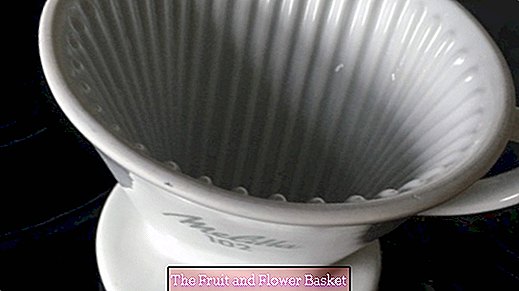Prepare coffee with the hand filter
When the fully automatic machine was under repair, I simply switched to hand-brewed filter coffee and tell you a few tips and tricks around the preparation by hand filter, so your coffee is really delicious.
What do you need for a hand infusion?
First of all you need a filter. It is made of plastic or porcelain. The plastic version has the advantage that the water does not cool when pouring and the filter is cheap for about 2.50 euros. For a porcelain filter you have to reach deeper into the bag. I have paid for my about 18 euros and I'm very happy with it, because the part reminds me of nice weekends at the grandma and porcelain just more style than plastic. Maybe there is someone in your older? Relatives who still have such a porcelain filter left.
What does the number of holes in the filter say?
When buying filters or browsing in the attic, you will notice that they have a different number of holes. Mine has two holes, but I have already seen some with six or even one hole. The more holes, the faster the coffee runs through. If you're brewing a big pot, you may be glad to have a filter with three or six holes. If you have accumulated several filters, then you can tune your filter on the coffee powder. If it is rather finely ground and begins to falter in the one-hole filter, the coffee becomes bitter. Try it with a multi-hole filter. And of course the other way around too: the powder is rather coarse and the coffee runs through the multi-hole filter, tastes thin and boring, then brews the next cup just in the one-hole filter.
Find the right size for the filter bags
Which size you choose is up to you. The indication 1x4 or depending on the manufacturer only the? 4? stand for once and get four cups, 1x2 results in one time pour two cups. For coffee machines usually size 4 is used. Old names still to be found on the market, like the 102, date from the beginnings of filtered coffee, when there were still seven sizes, namely from 100 to 106.
The amount of coffee powder
You can count on 6 to 8 grams of coffee per cup. If you do not feel like getting out the kitchen scales every time, then put a coffee in the coffee can. This little creator is designed for this number of grams. A cup is assumed to be 125 milliliters, if you put 200 milliliters, then you need about 10 to 12 grams, with a liter around 55 to 60 grams.
Everything together? Then you can brew?
First, you fold your filter bag on the double seam at the bottom and on the edge and put it in the filter. The kinks help that the bag sits stably, does not fall in when tucked in or breaks apart. Now you put the whole thing on your pot or your cup and let pass in the first run hot water. As a result, the paper taste of the filter bag washes out and does not end up in the coffee later. Benefit for those who work with a porcelain filter: it is already preheated and does not drain your coffee from the heat. Do not forget to pour away the water. Please do not laugh because of the hint. It happened to me a few times in the morning Tran, that the cup overflowed?
Now add the coffee powder and shake it so that everything is spread out flat. The boiled water with its 100 degrees Celsius let it cool for a minute or two. Then it has the optimum temperature of 96 to 92 degrees. You pour a little bit of water over the powder and let it draw for half a minute. Now brew slowly, keeping the beam centered and circling. Too close to the edge, the powder falls in the middle and may delay the further passage; the coffee can taste bitter.
The filter and filter bag was invented by Melitta Bentz and patented in 1908. For her prototype, she has provided the bottom of a tin can with holes and put a blotting paper in it. From there it was over with the coffee grounds between the teeth. Coffee grounds reading is still possible.





